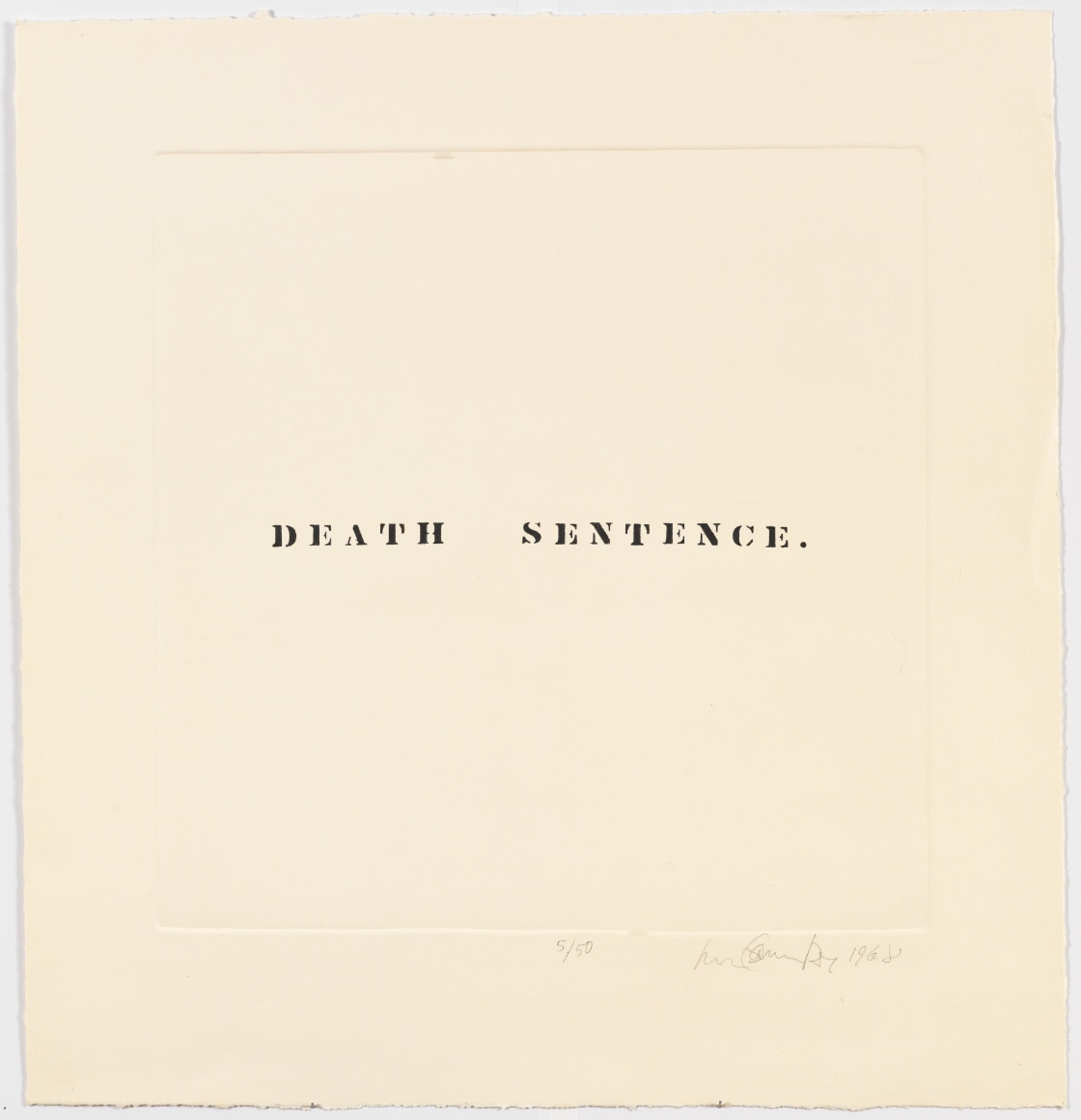In 1964, after moving to New York from his native Uruguay, Camnitzer co-founded The New York Graphic Workshop with Liliana Porter and José Guillermo Castillo (1941–1999), who had recently arrived from Buenos Aires and Caracas, respectively. For six years, until 1970, they probed the capabilities of the medium by defying its traditional limitations. The workshop prioritized innovation and experimentation via three-dimensional prints, exhibitions staged through the mail, and other irreverent sometimes humorous propositions promoting the efficacy of printed images and multiples. In 1964, Camnitzer wrote a manifesto that was later adopted by the group as a statement of intent. He argued that printmaking should not restrict, but rather amplify the possibilities of an artist to generate conceptually rich ideas through bold graphic work.
Camnitzer’s contributions are distinguished by his examination of language as subject. These prints frequently explore the concept of tautology via self-referential etchings, like Tape (1968) and Horizon (1968), which reveal the processes of their own making. As Camnitzer’s interest in language unfolded, so did his aim to express socio-political concerns through his art. With partisan statements like Che (1968), which plainly presents the late revolutionary’s written name in place of his portrait, Camnitzer mobilized his semantic inclination to address—and rebuke—the growing wave of military regimes taking power in Latin America as well as the fraught political landscape of his adopted country, the United States.






















